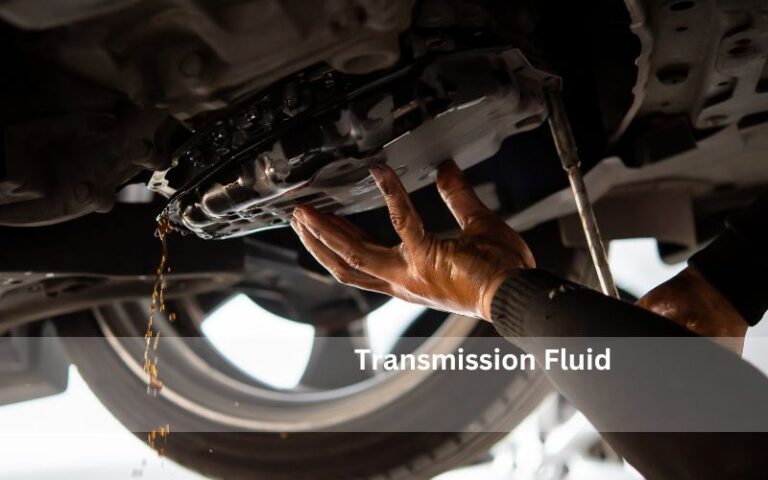Troubleshooting Ignition System Problems: Common Signs Explained
Ignition system problems can be identified by common signs. Here is an explanation of these signs.
Troubleshooting ignition system problems is crucial for ensuring the proper functioning of your vehicle. As a car owner, you may come across various signs that indicate issues with the ignition system. It is essential to understand and recognize these signs, as they can help you diagnose and fix problems early on, reducing the risk of more extensive damage to your vehicle.
We will delve into the common signs of ignition system problems and provide an explanation for each. By familiarizing yourself with these signs, you can take timely action to address any issues and keep your vehicle running smoothly. So, let’s get started and explore the signs of ignition system problems that you should be aware of.

Credit: www.ymfcarparts.co.uk
Common Signs Of Ignition System Problems
Engine Misfiring
An engine misfiring indicates a potential ignition system issue.
Misfires can lead to rough idling and decreased fuel efficiency.
Difficulty Starting The Engine
Struggling to start the engine can signify issues within the ignition system.
Intermittent starting problems may point to faulty spark plugs or ignition coils.

Credit: www.lakelandhyundai.com
Causes Of Ignition System Problems
Ignition system problems can be caused by faulty spark plugs, a failing ignition coil, or a worn-out starter motor. These issues can lead to poor engine performance, misfiring, and difficulty starting the vehicle. Regular maintenance and addressing warning signs early can help prevent ignition system problems.
Ignition system problems can occur due to various reasons, resulting in a sluggish or non-starting engine. These problems can be frustrating and affect the overall performance of your vehicle. In this section, we will explore two common causes of ignition system problems: faulty ignition coil and worn-out spark plugs.
Faulty Ignition Coil
An ignition coil plays a crucial role in the ignition system. It is responsible for converting the low voltage from the battery into a high voltage needed to create a spark in the spark plugs. When the ignition coil becomes faulty, it can lead to a weak or inconsistent spark, causing misfires in the engine.
Worn-out Spark Plugs
Spark plugs are vital components of the ignition system that ignite the fuel-air mixture in the combustion chamber. Over time, spark plugs can wear out due to the constant exposure to high temperatures and combustion gases. When spark plugs become worn-out, they may not generate a strong enough spark, resulting in misfires and poor engine performance.
Diagnosing Ignition System Problems
When it comes to troubleshooting ignition system problems, it’s important to be able to identify the common signs and understand how to diagnose the issues. By knowing the symptoms and their potential causes, you can quickly narrow down the problem and take appropriate action to fix it. In this section, we will explore some effective methods for diagnosing ignition system problems.
Using Obd-ii Scanner
An OBD-II scanner is a valuable tool that can help you pinpoint ignition system problems with ease. This diagnostic tool is plugged into the OBD-II port, typically located under the dashboard near the steering column. Once connected, the scanner retrieves and displays error codes that can indicate specific ignition system malfunctions.
Here’s how to use an OBD-II scanner:
- Locate the OBD-II port in your vehicle.
- Plug the OBD-II scanner into the port.
- Turn on the ignition without starting the engine.
- Follow the scanner’s prompts to retrieve error codes.
- Refer to the scanner’s manual or online resources to interpret the codes and identify the ignition system problem.
Checking Spark Plug Condition
The spark plugs play a crucial role in the ignition system, so checking their condition can help you identify potential problems. Here’s how to check spark plug condition:
- Locate the spark plugs in the engine bay.
- Remove the spark plug wires or ignition coils to access the plugs.
- Inspect the spark plugs for any signs of damage, such as worn electrodes, excessive carbon buildup, or oil fouling.
- If the spark plugs appear worn or damaged, they may need to be replaced.
It’s important to note that when inspecting the spark plugs, you should also check for proper spark plug gap, as an incorrect gap can affect the ignition system’s performance. Refer to your vehicle’s manual or the manufacturer’s specifications to determine the correct gap measurement and adjust if necessary.
Repairing Ignition System Problems
Learn to identify and address common ignition system issues by recognizing key warning signs. From misfiring to engine stalls, understanding these indicators can help troubleshoot and repair ignition system problems effectively. Gain insight into the causes behind these issues and take necessary steps to restore optimal engine performance.
Repairing Ignition System Problems — The ignition system is crucial for the performance of your vehicle. When experiencing issues, here are some essential steps to repair the ignition system. —Replacing Ignition Coil
— To begin, inspect the ignition coil for any signs of wear or damage. Next, refer to your vehicle’s manual for the correct replacement part. Then, disconnect the old ignition coil by removing the bolts and wires carefully. After that, install the new ignition coil by attaching the bolts and connecting the wires securely. Finally, double-check that the ignition coil is properly in place before testing the system. —Installing New Spark Plugs
— Select the appropriate spark plugs based on your vehicle’s specifications. Firstly, locate the spark plugs in the engine compartment. Next, remove the old spark plugs using a socket and spark plug wrench. Then, apply anti-seize compound on the threads of the new spark plugs before installing. Lastly, tighten the new spark plugs carefully and ensure they are securely in place to avoid any misfires.Preventive Maintenance For Ignition System
Preventive maintenance for the ignition system is crucial to ensure the smooth functioning of your vehicle. By performing regular inspection and cleaning, as well as using high-quality spark plugs, you can minimize the risk of ignition system problems and maximize the performance of your vehicle.
Regular Inspection And Cleaning
One of the most important aspects of preventive maintenance for the ignition system is regular inspection and cleaning. Ensure that all components are free from dirt, debris, and corrosion. Clean the contacts and terminals to maintain a strong connection. Check for any signs of wear or damage, and replace any worn out parts immediately.
Using High-quality Spark Plugs
Investing in high-quality spark plugs is a simple yet effective way to ensure the longevity of your ignition system. Opt for premium-grade spark plugs that are designed to deliver consistent performance and reliable ignition. Quality spark plugs can also improve fuel efficiency and reduce emissions, contributing to a greener and more cost-efficient driving experience.

Credit: datamyte.com
Frequently Asked Questions Of Troubleshooting Ignition System Problems: Common Signs Explained
What Are Signs Of Ignition Problems?
Signs of ignition problems may include difficulties starting the engine, frequent stalling, engine misfires, and a decrease in fuel efficiency. Other indicators can be a flickering dashboard or warning lights, a burning smell, or unusual noises while driving. It is essential to address these issues promptly to prevent further damage to the vehicle.
What Are The Common Troubles In Ignition System?
Common troubles in the ignition system include faulty spark plugs, ignition coils, and ignition modules. Other issues can arise from a defective distributor cap or rotor, worn-out ignition wires, or a malfunctioning ignition switch. These problems can result in difficulty starting the engine, engine misfires, or stalling.
What Might You Notice With A Malfunctioning Ignition System?
Signs of a malfunctioning ignition system include difficulty starting the car, engine misfires, stalling, and decreased fuel efficiency.
How Do You Troubleshoot An Ignition Problem?
To troubleshoot an ignition problem, check for loose connections, inspect the spark plugs, examine the ignition coil, and test the battery. Clean or replace any faulty components, and ensure proper fuel delivery. If issues persist, seek professional assistance for further diagnosis and repairs.
Conclusion
Understanding common signs of ignition system issues is crucial for vehicle maintenance. With proper troubleshooting, you can address problems efficiently and ensure optimal performance. Regular inspections and prompt repairs will help prevent costly issues down the road, keeping your vehicle running smoothly.
Trust your instincts and take action when needed.




